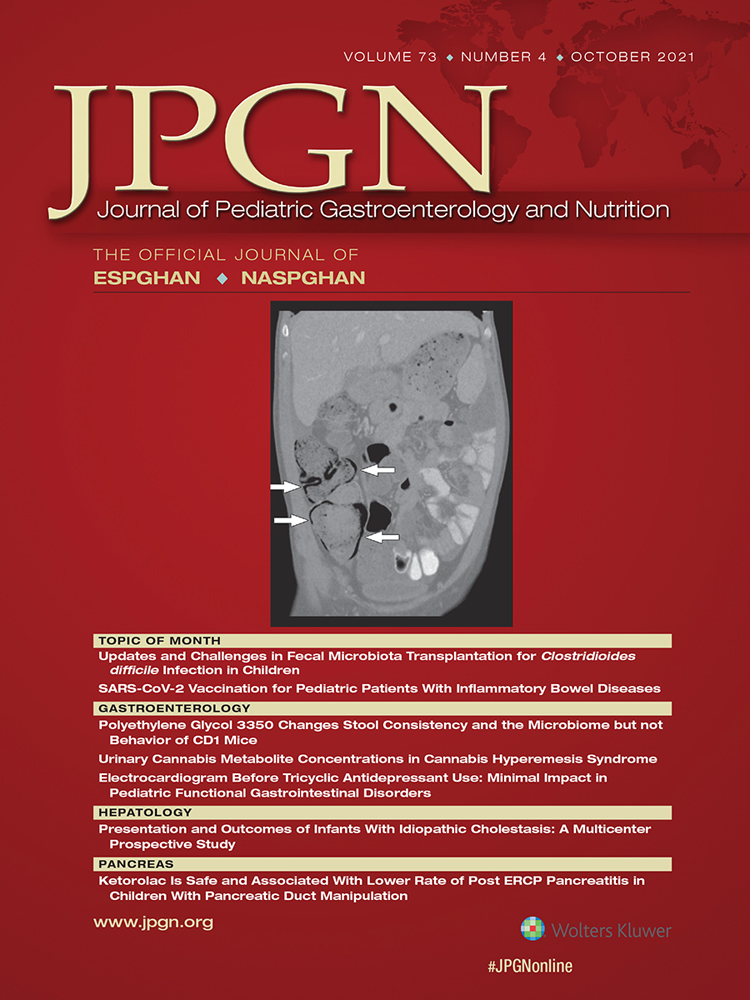Fatty Acid-Binding Protein 1 as a Potential New Serological Marker of Liver Status in Children With Wilson Disease
This research was supported by The Children Memorial Health Institute research grant 256/18.
The authors report no conflicts of interest.
Profs Bożena Cukrowska, Piotr Socha contributed equally to this study.
Supplemental digital content is available for this article. Direct URL citations appear in the printed text, and links to the digital files are provided in the HTML text of this article on the journal's Web site (www.jpgn.org).
ABSTRACT
Objectives:
Wilson disease (WD) is a copper metabolism disorder with toxic copper accumulation in the liver leading to liver steatosis or fibrosis. In vitro studies suggest that fatty acid-binding protein 1 (L-FABP) and lipid droplet-associated protein 5 (PLIN5) may have an impact on both processes, but knowledge about these potential biomarkers is insufficient in the case of WD. Thus, the aim of this study was to determine L-FABP and PLIN5 levels in sera of WD patients in relation to liver steatosis/fibrosis.
Methods:
The final study involved 74 WD children in whom liver steatosis (WD1 subgroup, n = 28) and fibrosis (WD2 subgroup, n = 13) were assessed with the use of transient elastography. Control groups included WD children without steatosis and fibrosis (WD0 subgroup, n = 33) and healthy children (n = 75). L-FABP and PLIN5 measurements were performed in sera with the use of the immunoenzymatic method.
Results:
L-FABP was significantly higher in the WD2 subgroup, and the correlation between L-FABP concentration and liver fibrosis was confirmed statistically by regression analysis (P = 0.04) with Pearson's coefficient r = 0.24. L-FABP was significantly correlated with alanine aminotransferase (r = 0.42) and aspartate aminotransferase (r = 0.37) activity. PLIN5 concentration was similar in all groups and was not related to steatosis and fibrosis.
Conclusions:
Our results suggest that serum L-FABP could be a novel biomarker of liver fibrosis in WD children.




